Wood Ducks, A Kingfisher But No Bald Eagle At the PPL Wetlands

After another week of searching for wild mushrooms, this time with some success, (this is a photo of some of my finds, including chicken of the woods, hen of the woods, and milker mushrooms), I decided to take a break and search for wood ducks, bald eagles, kingfishers and other wildlife,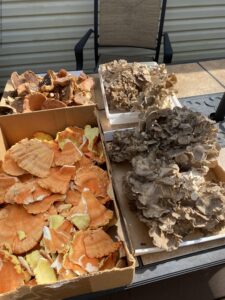
at the PPL Wetlands in Salem Township, Luzerne County on Sunday. 
It was partly cloudy and cool when I arrived around 8 a.m. The September sun continues to rise later and move further south in our skies. Like last week I walked along the shore of the very low Susquehanna River. I was hoping to see a bald eagle hunting for fish but saw only some great blue herons wading along the shore. They flew off before I could get a photo. 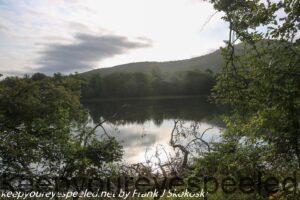
I walked back into the now quiet wetlands as the sun broke through the cloud cover. Only a few remaining catbirds and a band of blue blue jays broke the silence. No frogs croaking, song birds singing or insects buzzing. 
I was lucky again this week, and did see some wood ducks. One was perched on a log in a canal along the trail. 
And a larger flock perched on a canal in a large pond.
They are not as flighty now that the young ducklings can fly to safety. Still any slight quick movement and they are gone. 
There were no muskrats in the waters of the canals this week and I only got this uqick photo of a beaver swimming away as I approached. 
There were a lot of squirrels and 
chipmunks scampering around the trails and trees in both the wetlands and riverlands. 
And a few of the last flowers of summer still bloomed providing some color as I walked including the native ironweed,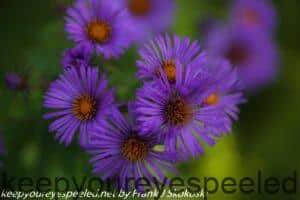
the jewelweed or touch-me-not. The sap of this native plant can be applies to insect stings. 
Acorns were now strewn on the ground, and occasionally I could hear one fall to the ground.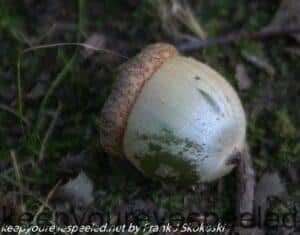
There were also some wild mushrooms growing ground in the wetlands including this amanita mushroom which may be a deadly destroying angel. 
This bitter bolete is not deadly but is too bitter to eat. 
The red berries of the autumn olive and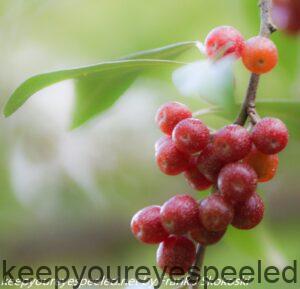
northern spice bush could be seen hanging from branches along the trail. 
I walked over to the river lands and found very few people at Lake Took-A While. During the summer the trail along the lake is crowded with fisherman, walkers, runners and families enjoying a picnic. Not on Sunday. It was quiet. 
As I walked along the lake I heard the chatter of a pair of kingfishers. I was able to photograph on in flight. 
As I proceeded on my walk, another kingfisher flew across the lake and landed in a nearby treetop.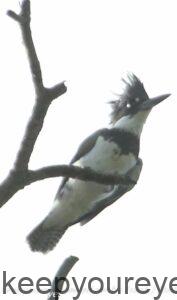
Unfortunately it happened so quick I was unable to adjust my camera settings and only got these photographs. It was a good opportunity but I missed it. It was still nice to see the kingfisher. 
I walked past the lake and to the butterfly garden where I saw the monarch butterfly caterpillars last week. The monarch caterpillars were gone and there was just this brown,
and yellow butterflies I haven’t identified. 
On my walk back I was surprised to not see a single dragonfly. And very few bees or wasp.
I observed a few more wild flowers including this one that my iPhone plant identification app said it is gaura biennis, a flower I never have seen before
and some pretty blue lobelia flowers.
and frogs can now be seen in the wetlands.
I saw no other wildlife on my 2 1/2 mile return walk but did find this edible bolete near the end of the trail. 
I didn’t see as much wildlife as my hike the week before. and no bald eagles, but I enjoyed seeing the wood ducks. the kingfishers and flowers and scenery. It is always a nice hike when I visit the wetlands. Here is a link to a gallery with some more photo of the wood ducks and other animals from my hike. PPL Wetlands September 13 2020.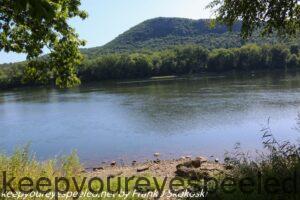
For human beings to destroy the biological diversity of God’s creation; for human beings to degrade the integrity of the earth by causing changes in its climate, by stripping the earth of its natural forests or destroying its wetlands; for human beings to contaminate the earth’s waters, its land, its air, and its life — these are sins. — Patriarch Bartholomew
Categories


Recent Comments